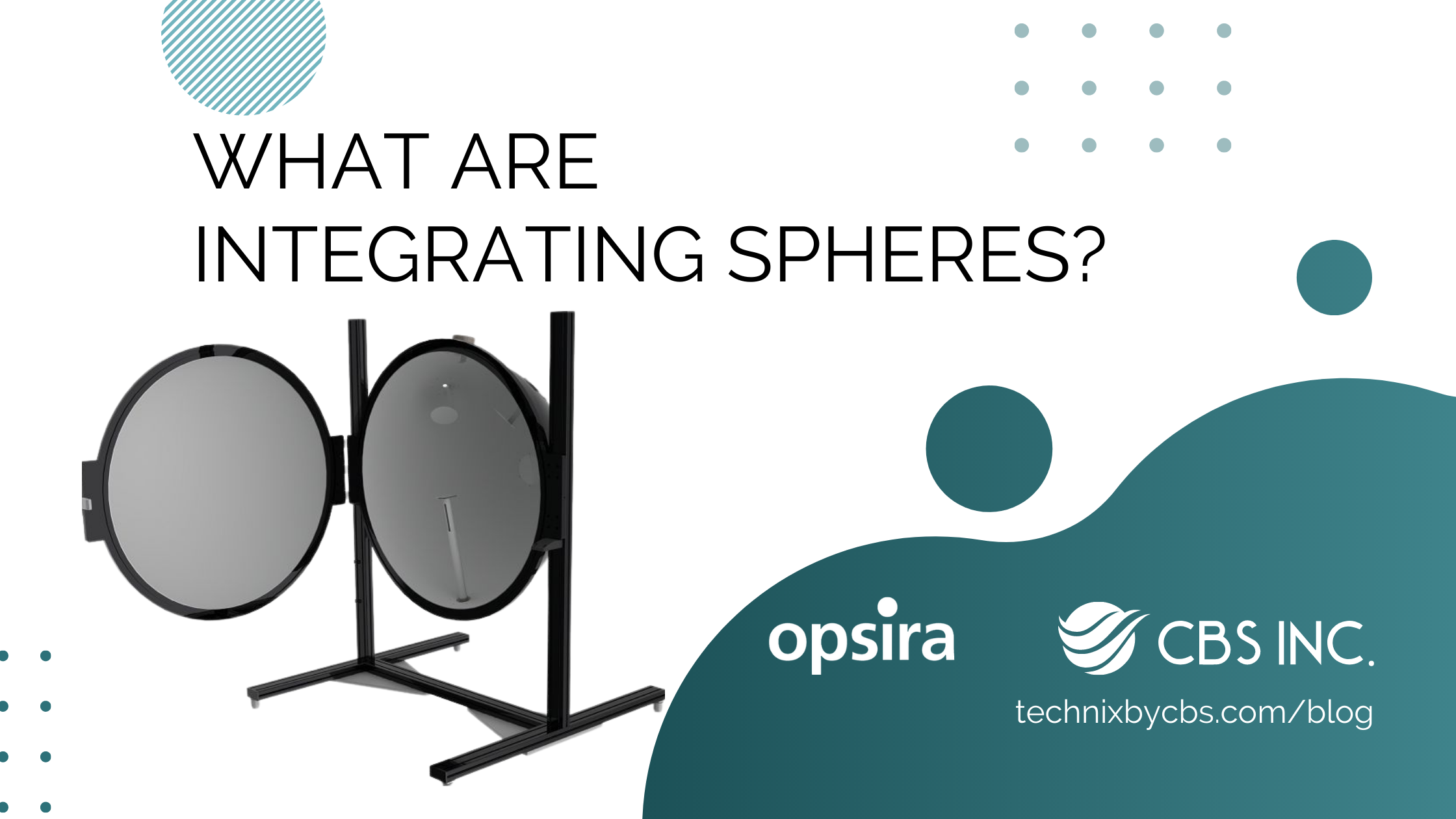Blog

Integrating Spheres
Fundamentals
Integrating spheres collect electromagnetic radiation from a source and are typically used to measure the total power output. Light that is emitted into the integrating sphere reflects and scatters off the wall and is collected by a detector located at a small port opening. With enough internal reflections, the light is distributed uniformly inside the sphere and the power then present on the detector is proportional to the initial power from the source.
Theory
The purpose of an integrating sphere is to spatially integrate radiant flux. As stated before, the total radiant flux on the detector can be related back to the power of the test source, making them very good calibration devices.
In short, there are two equations that can be used to define the performance of an integrating sphere. We start by denoting the radiance, L, produced by the integrating sphere as:
where Φ is the incident power, A is the interior surface area, f is the “port fraction” (the total area occupied by all of the openings divided by the interior surface area), and ρ is the reflectance of the interior surface. Following the definition of radiance, the output power P into 2π steradians can be calculated using:
where Aport is the total area occupied by all of the openings.
Applications
While seeming simple and one dimensional in design, integrating spheres have a variety of applications that include:
- Light output measurement
- Measurement of the total luminous flux
- Measurement of the light output ratio in %
- Measurement of specular and diffuse reflection and transmission. Transmission measurements are performed by mounting a test sample at the entrance port and illuminating from behind before light enters the sphere. Reflection measurements are carried out by illuminating the test sample inside the sphere, either by using an integrating sphere with a sample holder or by placing the sample at a port opposite to that of the source.
- Generate uniform fields of light to e.g. calibrate remote-sensing cameras
Size
Integrating spheres vary in size depending on the measurement needs of the user. For large test sources such as sodium lamps or long fluorescent tubes, a large integrating sphere is required to fit the lamp inside the sphere.
Smaller sources such as lasers and LEDs should be measured with a smaller integrating sphere so as to not limit the sphere's responsivity. The diameter is ideally ten times the size of the largest dimension of the test source.
In general, 1 to 3 meter diameter spheres are used for luminous-flux measurements of the most common luminaires, integrating spheres larger than 2 meters are typically used to measure 500 W or larger test sources.
 (5) (1).png)
Coatings
One of the most important aspects of an integrating sphere is the coating used on the inner wall of the sphere as different coatings will yield different spectral responses and therefore need to be decided upon while considering the source's emission spectrum.
For example, when measuring in the visible spectrum, typically a barium sulfate (BaSO4) coating is applied. For sources emitting in the infrared spectrum, a gold coating is commonly used. It is important to check that the coating used is suitable for the wavelength of interest to ensure accurate results.
